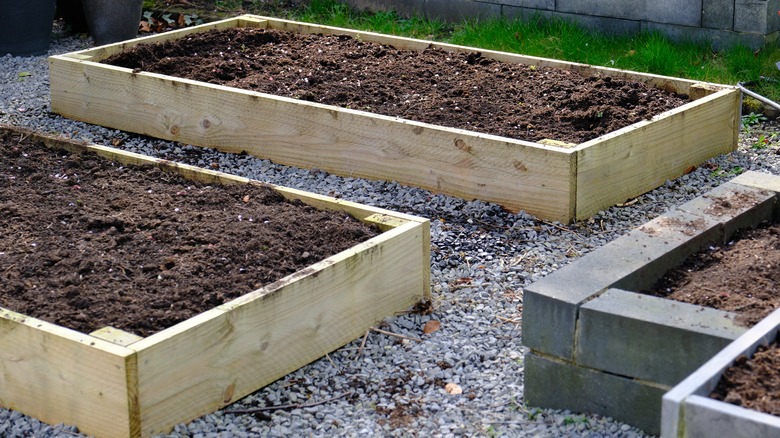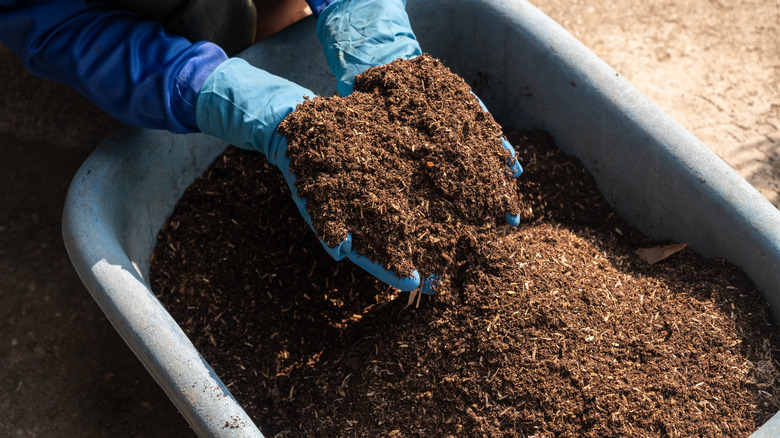The Most Important Soil Tip For Raised Garden Beds You're Likely Skipping
If you ask 100 gardeners about the best soil for raised beds, don't be surprised if you get 100 slightly different answers. The general consensus is a mix of 30% organic material like compost and 70% mineral soil, which comes from weathered rocks and minerals and contains no more than 20% organic materials. Mineral soil is the kind of soil you'll typically find on your property, though you may want to think twice about using your own soil for raised garden beds. If you are going to go that route, at least get your soil tested before using it. Or, you can also buy packaged mineral topsoil.
Many gardeners stop at these two basic ingredients, but if you are looking to start a raised garden bed, it's best not to skip out on valuable soil amendments. These are designed to create the best environment for plant roots by adjusting water flow and retention, drainage, aeration, and the soil's structure. You could throw in some additional minerals, especially if you are using a store-bought mineral soil. A good choice for a mineral boost is rock dust, which can help adjust soil pH, improve soil drainage and water retention, and overall make the soil more fertile. Made from crushing rocks like zeolite, basalt, glacial rock dust, limestone, and greensand, rock dust can also help store carbon in the soil so it stays out of the air.
Add soil amendments to raised bed soil for a healthy boost
You can also try adding additional organic materials like worm castings, which are more nutritious than general compost and releases nutrients more gradually. These days, one of the hottest soil amendments is biochar, and "hottest" carries a double meaning: Biochar is biomass (like wood) heated with little to no oxygen at extremely high temperatures (at least 932 degrees Fahrenheit). The effects of using biochar in gardens are not yet well-studied. However, this material is known to sequester carbon, detoxify heavy metals, and increase water and nutrient retention.
Because it is very complex to produce, it's recommended to buy commercially available products if you are looking to add this material to your garden beds in fall for bigger blooms in spring. Bonus tip: Try adding worm castings and biochar together to your soil. Biochar, which is porous with a complex carbon structure, provides microbes with plenty of surface area to grow, but is not nutrient-rich itself. The worm castings, therefore, can "charge" the biochar so that it can perform its best.
These are just a few of the many materials you can use to fill your raised garden beds. You could also consider adding substances like perlite, peat moss, manure, or mulch. Each material has its own role to play in adjusting your soil's drainage, aeration, and nutrients.

